Search results for: 'stone a'
-
 Roman intaglio with two persons
Roman intaglio with two personsRoman yellow glass paste from the Professor Brosch collection of ancient glyptics.
Price: on request Powerful and heavy work axe
Powerful and heavy work axeRare and impressively large and heavy tool from the New Stone Age. The axe type comes from Jutland, Denmark.
Price: on request Large clay figure of Aphrodite Anadyomene type
Large clay figure of Aphrodite Anadyomene typeVery impressive, 27 cm high elegant figure. The goddess is rising from the sea, setting her foot on a stone and leaning on a high column.
Price: on request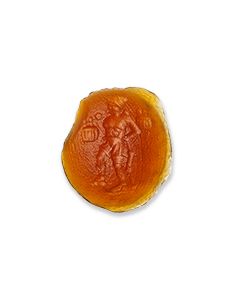 Roman intaglio with Odysseus as a beggar
Roman intaglio with Odysseus as a beggarThe roman intaglio shows an important scene from the Odyssey in which Odysseus returns home after his long journey. The hero is disguised as a beggar. He wears his pilos hat and is resting his weight on a stick.
Price: on request Roman intaglio with hippocampus
Roman intaglio with hippocampusBeautiful depiction of the popular mythical creature from Greek and Roman art. The orange glass paste copies an engraved carnelian gem. From the Roman period.
Price: on request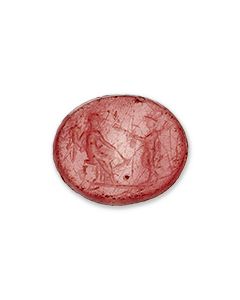 Roman intaglio with Hermes and Tyche
Roman intaglio with Hermes and TycheThe ancient intaglio from Roman times shows a scene between the two gods. From the Professor Brosch collection of engraved gems.
Price: on request Neolithic flint dagger from Denmark
Neolithic flint dagger from DenmarkDouble-edged blade and flat shaft made of beautiful flintstone. A status symbol from the transitional period between Late Neolithic and Early Bronze Age.
€480 Stylized Bes mask
Stylized Bes maskHighly stylized miniature mask of the god Bes from ancient Egypt. Stone with nice texturing.
€250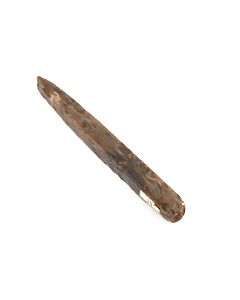 Neolithic chisel from Northern Germany
Neolithic chisel from Northern GermanyElegantly shaped chisel with two polished sides. Made of dark flint. Approx. 3400 to 2400 BC.
Price: on request Flint knife from Northern Germany
Flint knife from Northern GermanyFlat two-edged stone blade from the Dagger Period of Northern Europe.
Price: on request Roman intaglio with Ganymede and eagle
Roman intaglio with Ganymede and eagleThe dark glass paste symbolizes a famous love affair from ancient mythology. The sky father Zeus falls in love with the beautiful Ganymede, a Trojan king's son.
Price: on request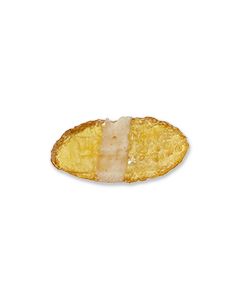 Roman intaglio
Roman intaglioRing insert made from beautiful, bright yellow glass paste. From the Professor Brosch collection of ancient gems.
Price: on request Neolithic axe head from Luetzow in Northern Germany
Neolithic axe head from Luetzow in Northern GermanyPolished axe made of beautiful brown flint. It was found more than 100 years ago near the town of Luetzow.
Price: on request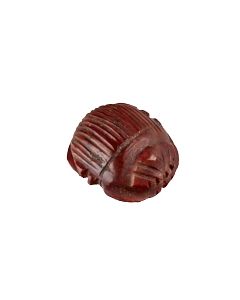 Scarab made of dark red stone
Scarab made of dark red stoneThis fantastic funerary scarab captivates with the beautiful red stone it was made of. A piece from the Greco-Roman period.
Price: on request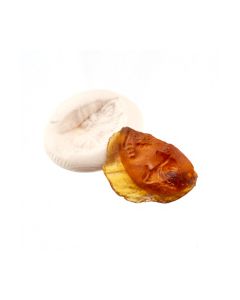 Roman intaglio of good workmanship
Roman intaglio of good workmanshipQuality ring stone from orange-brown glass. Showing a draped bust. Roman period. From the Professor Brosch collection of ancient gems.
Price: on request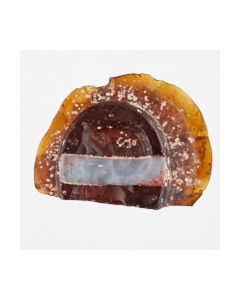 Ancient intaglio with head of Zeus Ammon
Ancient intaglio with head of Zeus AmmonBeautiful intaglio made of dark orange brown glass. Excellent quality. The ring stone boosts a rare portrait of Zeus Ammon.
Price: on request Neolithic flint dagger from Denmark
Neolithic flint dagger from DenmarkDouble-edged blade and flat shaft made of beautiful flintstone. A status symbol from the transitional period between Late Neolithic and Early Bronze Age.
Price: on request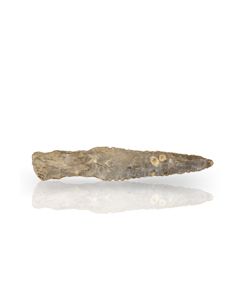 Neolithic flint dagger from Denmark
Neolithic flint dagger from DenmarkDouble-edged blade and flat shaft made of beautiful flintstone. A status symbol from the transitional period between Late Neolithic and Early Bronze Age.
€650 Scarab with pattern of circles
Scarab with pattern of circlesThe beetle stone bears a popular motive of the Middle Empire. A nice example of its kind. This scarab is described in the catalogue of Irène Gautier-Vodoz.
Price: on request Neolithic axe mounted for museum display
Neolithic axe mounted for museum displayThe stone tool is from the European Neolithic. A special feature is the museum-quality custom made shaft which gives a great impression of the tool's former mounting.
Price: on request Etruscan scarab with horses
Etruscan scarab with horsesGem stone and seal made of beautiful carnelian. It shows two horses in a frontal view in a highly stylized manner. From the famous Giorgio Sangiorgi collection.
Price: on request Neolithic dagger blade from Denmark
Neolithic dagger blade from DenmarkDouble-edged, pointed blade made of beautiful flint. The blade was for a dagger, the typical status symbol from the transitional period between Late Neolithic and Early Bronze Age.
€480 Campanian red figure Hydria with thermoluminescence analysis
Campanian red figure Hydria with thermoluminescence analysisFrom the workshop of the Branicki painter, 330 - 320 BC, Cumae. Impressive large vase in very nice condition.
Price: on request Neolithic dagger blade from Denmark
Neolithic dagger blade from DenmarkDouble-edged, pointed blade made of beautiful flint. The blade was for a dagger, the typical status symbol from the transitional period between Late Neolithic and Early Bronze Age.
€470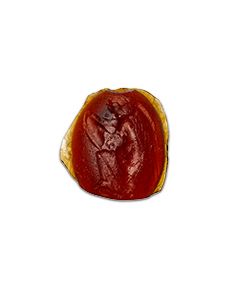 Roman intaglio with goddess of victory
Roman intaglio with goddess of victoryThe glass paste features a famous depiction of Victoria writing the names of victors in battle on a large shield. The motif reiterates a 1st century bronze statue.
Price: on request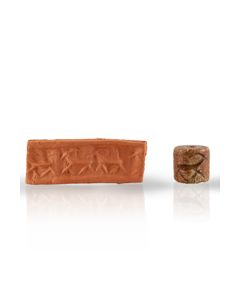 Mesopotamian cylinder seal with gazelles
Mesopotamian cylinder seal with gazellesThe seal made of nice red stone shows three gazelles walking in line. A wonderful artefact from the Jemdet Nasr period.
Price: on request Roman intaglio with goddess of victory
Roman intaglio with goddess of victoryThe glass paste features Victoria writing the names of victors in battle on a large shield.
Price: on request Dark Roman glass paste with white band
Dark Roman glass paste with white bandThe Roman ring insert is in excellent condition. The small-format motif is not clearly identifiable, but it may show a head.
Price: on request Egyptian predynastic cosmetic palette
Egyptian predynastic cosmetic paletteHigh quality palette with two stylized bird heads. Characteristic for the Naqada II period. Circa 3500 to 3200 BC.
Price: on request Neolithic stone tool from Egypt
Neolithic stone tool from EgyptThe Stone Age weapon's point or knife blade is well crafted, with finely serrated edge. From a 100 year old museum collection.
Price: on request Neolithic stone tool from Egypt
Neolithic stone tool from EgyptThe Stone Age weapon's point or knife blade is well crafted, with finely serrated edge. From a 100 year old museum collection.
Price: on request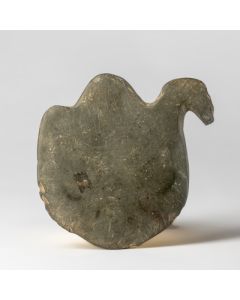 Egyptian cosmetic palette as a bird
Egyptian cosmetic palette as a birdPalette in the shape of a bird from predynastic Egypt. From the inventory of the Musée d'art et d'histoire in Geneva.
€6,080 Polychromic Roman mosaic showing a fish
Polychromic Roman mosaic showing a fishMuseal erhaltenes Paneau, sehr intensive, leuchtende Farben. Herausragendes, ungewöhnlich gearbeitetes Stück.
Price: on request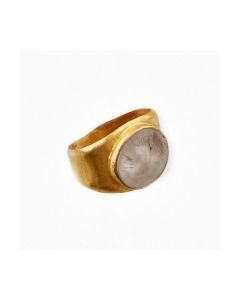 Roman gold ring with intaglio
Roman gold ring with intaglioA lovely piece of Roman jewellery in good condition. The chalcedony intaglio shows a portrait head. Dating to the 3rd century AD.
Price: on request Hand axe from Galilee
Hand axe from GalileeBig paleolithic hand axe. The universal stone age tool could be use as a borer or cutting tool. Around 500,000 to 200,000 BC.
Price: on request Conoid stamp seal with spade of Marduk
Conoid stamp seal with spade of MardukThe stamp shows the spade of Marduk, patron deity of the city of Babylon. Above a crescent, symbolizing the moon god Sin. 7th to 6th century BC.
Price: on request

